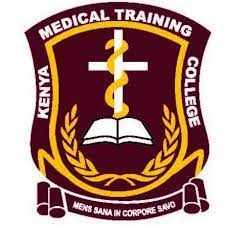Pain is a common phenomenon that is experienced by almost everyone. It is estimated that about 20% or more of a population may suffer from chronic pain and the prevalence can go up depending on different circumstances.
Although pain acts as a warning system that prepares us to work on or prevent any harmful occurrence, the pain I’m discussing below is that kind which hinders functionality and many times can debilitate a person. It is that pain that requires pain management for a person to get back to their life or redesign a new life and be equipped with strategies of improving their functionality.
To achieve this, your doctor may refer you to a pain management specialist who is pivotal in formulating a plan for managing the pain.
What is pain management?
Pain management or pain medicine is a branch of medicine that uses an interdisciplinary approach for easing the suffering and improving the quality of life of those living with chronic pain. This is achieved through use of simple methods or complicated interventions.
READ: Family Bank, FundMyWater To Finance Water Projects
What role does pain management play in a patients’ well-being?
Pain management will provide pain relief strategies aimed at bringing the patients’ pain experience to a workable level for them. Some of the patients will have complete relief of pain and others will have the pain reduced to what they usually call “manageable pain”.
This ranges from performing interventional pain procedures for relieving pain to participating in the patient’s rehabilitation programs. A pain management plan is formulated with an aim of having the pain controlled to facilitate improvement in functionality which leads to improved well-being.
Are there different classes of pain?
Pain is a sensation that majority of us experience. It is an experiential phenomenon that is unpleasant with a significant emotional distress that is associated with it. This means that pain can be both physical and psychological in nature. There is pain that is expected when it is a somewhat controlled environment for example: when there is a fracture; labour pain; pain from illnesses; and pain from surgery.
Most of the time this pain disappears when healing occurs. There is also pain that persists for days, months or years and when the patient is investigated, they are told they have healed. Then there is pain that occurs spontaneously and is difficult to manage. These kinds of pain seem to arise from a dysfunctional nervous system which manifests pain that is difficult to predict and affects the overall experience of life for such pain patients
READ: Foundation Donates Menstrual Hygiene Products To End Period Poverty
To manage this kind of pain one has to appreciate this pain as a disease and not only an acute disease but a chronic disease. This calls for a multifaceted approach to managing the patient. Using the biopsychosocial model of managing patients helps to cover most of the issues that these patients suffer when they are in different and difficult psychological spaces caused by this pain. Therefore, it requires focus on pain relief for the patients and improving their functionality in order to comprehensively manage the patient’s pain.
At what point will my pain require a pain management specialist?
Chronic pain can be debilitating at its worst or bothersome restricting a person from achieving their day-to-day goals and activities in life.
The impact of chronic pain is insidious and before you know it, you may reach points in your life where complications become permanent and resources spent are enormous. Therefore, you should consult a pain specialist if your pain has lasted for more than 12 weeks. It is at this point that pain becomes what we call chronic pain.
READ: ‘Aqua For All’ To Get Sh 330 Million For ‘Clean Water’
The most commonly used difference between acute pain and chronic pain is that acute pain is a pain that has lasted 3 months. Beyond the 3 months’, pain is considered to be chronic pain.
How is pain management administered and are there side effects?
There are several modalities in which pain management can be achieved. Given the subjective and complex nature of pain experience in each person and their significant care givers, these modalities of pain management are usually tailored for an individual pain patient in order to achieve maximum benefits for the patient.
Pharmacological modalities: This is the modality mostly used to control pain and may control about 60-80% of the pain conditions. It can be achieved through use of tablets, syrups, gels, sprays, injections and many others. Patients may experience side effects from the pain medications that they may be taking. This can range from drowsiness, nausea/vomiting, constipation, urine retention, reduced breathing rate to hyperacidity associated with stomach ulcers. The medication can be overwhelming to a point the patient just rejects them. In this case regular and frequent reviews are required to make sure the doses of the medication are tailored to the patient’s response and satisfaction.
READ: Safaricom Activates M-PESA Global In Bangladesh, Pakistan
Interventional pain management procedures: These can be a significant method where the pain cycle has proved difficult to break using medications or physical therapy. They can be office-based or operating room theatre-based procedures. They are resorted to depending on the pain intensity, the need to break the pain cycle and when the pain is hindering rehabilitation programs for the patients.
A review immediately after the procedure or a week later is required in which continued pain education and counseling can be provided for the patient. Complications can range from nerve injury to flare up of pain due to a steroid used in most procedures. However, assessment of the patient who may require these procedures and the clarity needed to understand why the procedure is needed, are provided for the patient.
Non-pharmacological methods: This involves psychological and physical exercises. Although these methods may have no side effects, they may harm a patient if the pain is severe and the patient is being pushed to have physiotherapy or the patient has an injury that has not been adequately diagnosed.
Eventually the non-pharmacological methods are the ones that are continued to be used for the long-term benefits but if done inadequately, they may also have long-term physical and psychological unwanted effects.
The mitigation of these complications is an ongoing process that requires real time involvement of the medical personnel and patients.
Having one’s pain managed has various benefits which can be: better control of the pain, improving how one feels and functions in life on a personal and professional level. It can also improve the sense of overall well-being and reduce or prevent a sense of despair
The Writer, Dr Gilbert Mwaka is a Consultant Pain Management Specialist at Aga Khan University Hospital, Nairobi.





